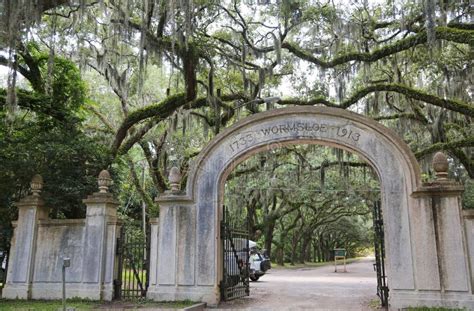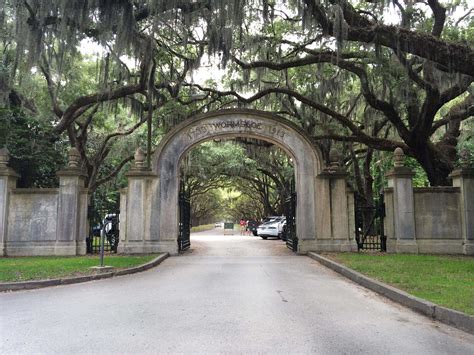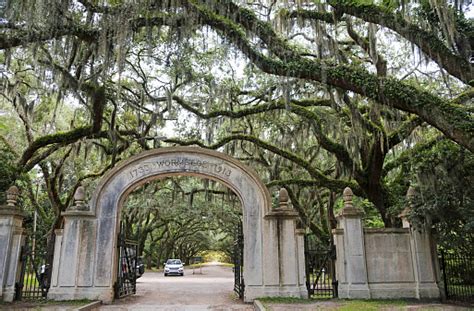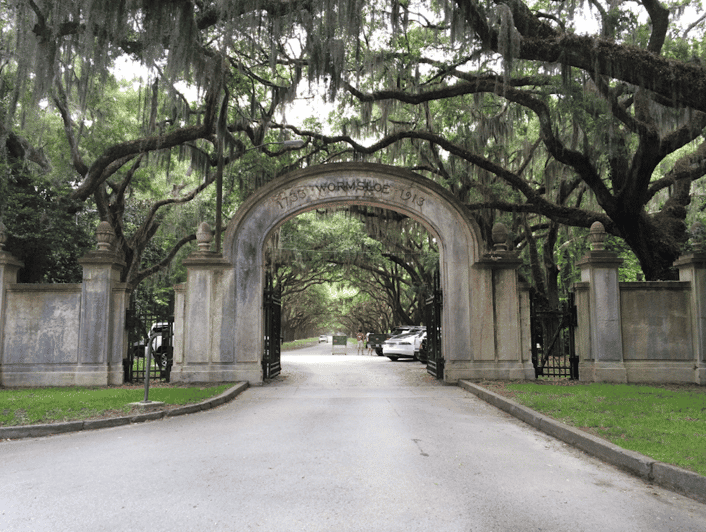Nestled in the heart of Georgia, the Wormsloe Historic Site stands as a testament to the rich tapestry of American history and natural beauty. Founded in 1736, this historic estate offers a unique glimpse into colonial life through its stunning architecture and picturesque landscapes. The site’s blend of historical significance and geographic charm makes it a fascinating subject of study. From its impressive ruins and lush surroundings to its role in shaping local culture and heritage, Wormsloe embodies the essence of both past and present. This article explores the historic significance, architectural features, cultural impact, and natural environment of the Wormsloe Historic Site, highlighting its enduring legacy.
Discover more about this topic with ritarblog.com in detail.
1. Historical Background
The Wormsloe Historic Site, established in 1736, holds a significant place in American history as one of the earliest colonial settlements in Georgia. Originally granted to Noble Jones, an influential figure in the early colony, the estate was named after his ancestral home in England. Jones, a surveyor and physician, played a crucial role in the development of Savannah and the surrounding region. Wormsloe was not only a prosperous plantation but also a strategic location during the Revolutionary War. The estate’s role in the early days of Georgia’s history is evident through its preservation of colonial-era architecture and artifacts.
Over the centuries, Wormsloe has witnessed numerous historical events, from its early days as a thriving plantation to its transformation into a cherished historical site. Today, it serves as a living museum, offering insights into 18th-century colonial life and the broader historical context of Georgia. The site’s preservation efforts ensure that the legacy of Noble Jones and the early settlers remains a tangible part of America’s rich history.

2. Architectural Features
The architectural features of the Wormsloe Historic Site are a striking reflection of 18th-century colonial design. The most notable element is the tabby concrete ruins of the original mansion, showcasing a blend of European and American building styles. The mansion’s remains include a distinctive facade with arched windows and doors, typical of the period’s grandeur. The site is also renowned for its picturesque oak avenue, a half-mile-long drive flanked by ancient live oaks draped in Spanish moss, creating a dramatic entrance to the estate.
Additional features include the preserved remnants of the estate’s outbuildings, such as the kitchen and slave quarters, which provide insight into the daily life of the colonial period. The design and layout of Wormsloe reflect the early settlers’ adaptation to their environment, combining functional elements with aesthetic considerations to create a lasting architectural legacy.

3. Cultural Impact
The Wormsloe Historic Site has had a profound cultural impact on the region, serving as a living testament to Georgia’s colonial heritage. Its historical significance extends beyond its architectural features, influencing local culture and identity. As one of the earliest European settlements in Georgia, Wormsloe embodies the challenges and achievements of the early colonists, offering valuable insights into their way of life.
The site has become a symbol of Southern history and tradition, attracting visitors interested in understanding the roots of American culture. Its annual events, educational programs, and preservation efforts contribute to a deeper appreciation of the area’s historical context. Moreover, Wormsloe’s scenic beauty and historical ambiance have inspired artists, writers, and historians, reinforcing its role in preserving and celebrating the cultural legacy of the colonial period. The estate’s continued relevance underscores its importance in both historical education and cultural heritage.

4. Geographic Context
Wormsloe Historic Site is strategically located on the Isle of Hope, a barrier island on the coast of Georgia. Its geographic setting offers a unique blend of natural beauty and historical significance. Positioned along the Intracoastal Waterway, the site benefits from its proximity to waterways that were crucial for trade and transportation in the 18th century. The estate’s location provides expansive views of the surrounding marshlands and the Wilmington River, highlighting its strategic importance in the colonial era.
The site’s landscape is characterized by a mix of coastal plain and maritime forest, featuring extensive oak groves and a rich array of flora and fauna. This geographic context not only contributed to the estate’s agricultural success but also played a role in its preservation. The natural environment surrounding Wormsloe enhances its historical ambiance and offers visitors a scenic and immersive experience, connecting them to the region’s ecological and historical heritage.
5. Flora and Fauna
The Wormsloe Historic Site is distinguished by its diverse and rich flora and fauna, which enhance its historical and natural appeal. The estate’s landscape features a picturesque oak avenue, lined with ancient live oaks draped in Spanish moss, creating a dramatic and iconic entrance. These majestic trees are complemented by a variety of other native species, including magnolias, pines, and palmettos, which contribute to the site’s lush, southern charm.
The surrounding marshlands and riverbanks are home to a variety of wildlife, including wading birds, such as herons and egrets, and small mammals like raccoons and opossums. The rich ecosystem supports numerous plant species and provides critical habitat for these animals, reflecting the site’s ecological diversity. The interplay between the estate’s historic architecture and its natural environment creates a unique setting that not only highlights the region’s biodiversity but also offers visitors a glimpse into the harmonious relationship between colonial settlers and their environment.
6. Archaeological Findings
Archaeological findings at the Wormsloe Historic Site provide valuable insights into colonial life and the estate’s historical significance. Excavations have uncovered a range of artifacts, including pottery shards, tools, and remnants of early colonial structures, shedding light on daily activities and the settlement’s development. The discovery of tabby concrete foundations and structural remnants offers a glimpse into the construction techniques used in the 18th century, highlighting the blending of European and American architectural practices.
Artifacts such as ceramic fragments and metal objects have been crucial in reconstructing the lifestyle of the estate’s early inhabitants. These findings reveal details about their diet, trade, and domestic life. Additionally, the presence of historical records and maps complements the physical evidence, enhancing our understanding of the estate’s evolution. The ongoing archaeological work continues to unearth new information, ensuring that Wormsloe’s rich history and its role in shaping Georgian and American heritage are preserved and accurately represented.
7. Tourism and Public Engagement
Tourism and public engagement at the Wormsloe Historic Site play a vital role in preserving and sharing its rich history. The site attracts numerous visitors each year, who come to explore its well-preserved ruins, scenic landscapes, and historical exhibits. Guided tours offer an in-depth look at the estate’s colonial architecture, significant events, and daily life during the 18th century. Educational programs and reenactments provide immersive experiences, helping visitors connect with the past.
Special events, such as historical festivals and cultural demonstrations, enhance public engagement by showcasing traditional crafts, foods, and customs from the colonial era. The site also encourages community involvement through volunteer opportunities and educational outreach. By offering interactive experiences and preserving its historical integrity, Wormsloe fosters a deeper appreciation for American heritage and ensures that its historical and cultural significance continues to resonate with both local and international audiences.
8. Future Prospects
The future prospects for the Wormsloe Historic Site are promising as efforts to preserve and enhance its historical and cultural significance continue. Ongoing conservation projects aim to maintain the estate’s architectural integrity and protect its natural environment from the effects of aging and climate change. Expanding educational programs and interactive exhibits are planned to provide deeper insights into colonial life and engage a broader audience. These initiatives include the development of new digital resources, such as virtual tours and interactive apps, to reach global audiences and enhance the visitor experience.
Additionally, there is a focus on increasing community involvement and partnerships with local schools and historical organizations to promote heritage education. Future plans also involve expanding research opportunities to uncover more about the site’s historical context and its role in American history. By continuing to innovate while respecting its historical roots, Wormsloe aims to preserve its legacy and ensure that future generations can fully appreciate its unique contribution to our understanding of early colonial life and history.
Wormsloe Historic Site stands as a remarkable testament to Georgia’s colonial past, blending historical significance with natural beauty. Its architectural grandeur, rich cultural impact, and diverse ecosystem offer a comprehensive glimpse into 18th-century life. As conservation and educational efforts continue, Wormsloe’s legacy will remain a vital link to America’s early history.
ritarblog.com

